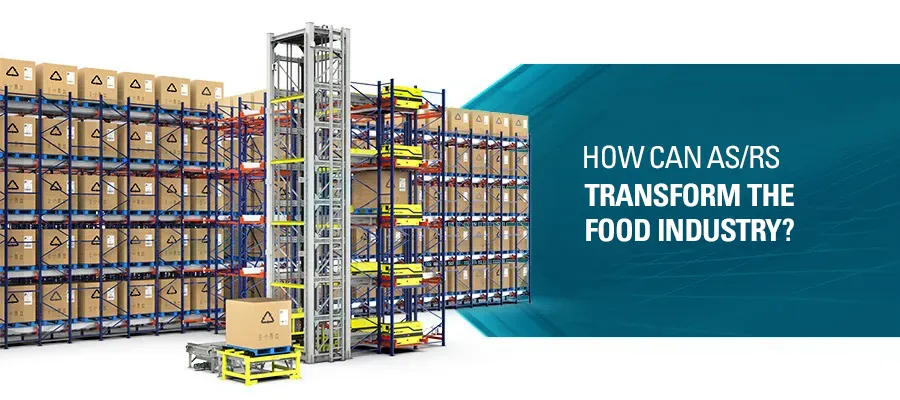Harnessing Efficiency: Warehouse Automation in the Solar Energy Revolution
In today's rapidly advancing world, the solar energy sector stands at the forefront of sustainable innovation.
Read More
Trust and customer satisfaction are crucial components of the food industry. To stay competitive, food distributors and manufacturers must maintain high standards for their products quality, reliability, and freshness.
Many producers and distributors in a food warehouse struggle with food safety. Many businesses are using automation to reduce recalls and their negative repercussions. An automated storage/retrieval system (AS/RS), utilizing a warehouse Management system (WMS), is one of the chief technologies making waves in an effort to reduce, if not prevent, recalls using real-time inventory insight. Since an AS/RS operates at high speeds, products are transferred into and out of the warehouse more quickly, reducing the risk of spoiling.
Food logistics is tasked with transporting, storing, and distributing perishable goods, or those that, due to their characteristics and composition, may degrade and should be consumed before a certain date. Businesses in this industry must set up their warehouses to fulfil high requirements for quality and hygiene if they want to guarantee that the original characteristics of these products are preserved. They must maintain a consistent temperature for the food at all times to prevent spoilage.
The abundance of SKUs in the warehouse is another aspect of the food industry that is prevalent. Additionally, because these products are consumed in such large quantities, their turnover rates are frequently high. Although there are some exceptions, such as alcoholic beverages and vacuum- packed items, it is crucial to use an effective product slotting and removal approach in accordance with each perishable item’s unique characteristics.
The FIFO (first in, first out) system, is one of the most widely used commodities management techniques in food warehouses. This method is crucial in the storage and retrieval of food items since it makes sure that perishable commodities with the earliest expiration date can be shipped out right away.
Compact storage systems that make the most of the available space to hold the greatest number of products are typically installed in storage rooms that are maintained at a controlled temperature.
Businesses are turning to automated solutions that maximise resources and cut down on the amount of time spent holding the goods in order to handle the increasing amount of perishable, high-turnover stock in cold storage warehouses.
Main benefits of using automated storage and retrieval sector in the warehouse is
Accuracy in managing inventories - Automated storage and conveying systems reduce errors in product handling and guarantee complete product traceability when used in conjunction with warehouse management software.
Swiftness in the transportation of commodities - Continuous material flows between the various parts of the warehouse are made possible by automated storage and conveying technologies. A conveyor system for boxes or pallets, for instance, can continuously supply the production lines or workstations.
Space optimization - Stacker cranes (AS/RS for pallets) and other automated solutions reduce the amount of space needed for the storage and retrieval of items while ensuring continuous combined cycles. The food business places a high focus on space efficiency; by storing more commodities in the smallest amount of space.
Warehouse Safety - Operator getting exposed to the cold must be reduced to ensure safe processes. Additionally, by putting automated systems in place, operators can be reassigned to a work that has a higher added value.
Customers and suppliers are calling for complete product traceability at an increasing rate. And one approach to meet this logistical necessity and accomplish precise and effective stock management is through process digitization.
The activities that take place in a warehouse, such as the reception of items, location management, and operator movements during order pickup and delivery, are all coordinated by warehouse management systems (WMS). In food logistics, warehouse digitalization is essential because it increases operator efficiency in challenging working environments. A WMS helps these workers with difficult activities like order selecting while minimising their travel.